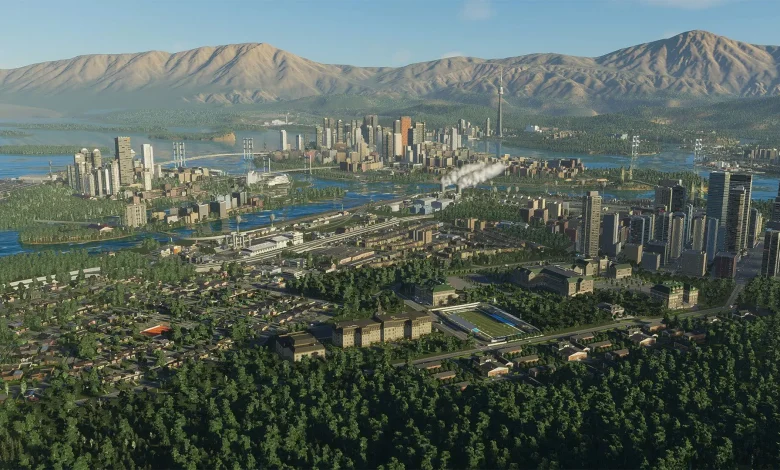
CITIES: SKYLINES II
It's a generally accepted fact by now that, if the criminal release of SimCity back in 2013 attempted to take the City Building Sims genre behind the barn and kill it without mercy, the release of Colossal Order's Cities: Skylines in 2015 probably succeeded in resurrecting and saving the genre on its own. The game's success, the magnitude of which was rather unexpected even by its own creators, prompted publisher Paradox Interactive to support it over the years with a long series of Expansion Packs, until we got to the official announcement of the sequel, Cities: Skylines II, which officially launches tomorrow the 24th.
This legacy the sequel must follow on is undoubtedly a grand one, given the success of the original and the large amount of extra content it has received so far. Let's see if it manages to live up to it and successfully build on that foundation.
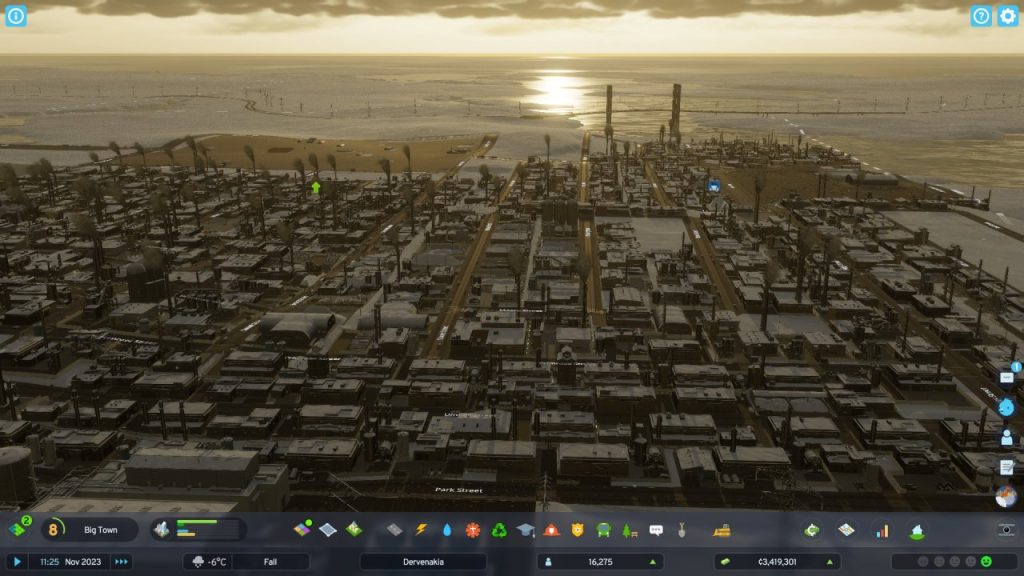
My first concern going into CS2 (I deliberately adopt this abbreviation to confuse Counter-Strike 2 fans and the Google algorithm) was precisely in relation to the Expansions that the original game had received: what's the point of playing 2 if the first one offers more content (and mods)? Thankfully that concern quickly largely dissipated, as, to their credit, the developers seem to have introduced into 2 many (but certainly not 100%) of the features offered by the expansions of the original CS. Thus, we can already in the base version of 2 play with features that were introduced in 1 via expansions, such as the disaster management aspect and the construction of emergency shelters, the implementation of various ground and sea public transportation, the construction of airports, and much more. So if someone was hesitant to switch to 2 precisely because they had invested heavily in the Expansions of 1, they can feel free to withdraw at least some of their hesitations.
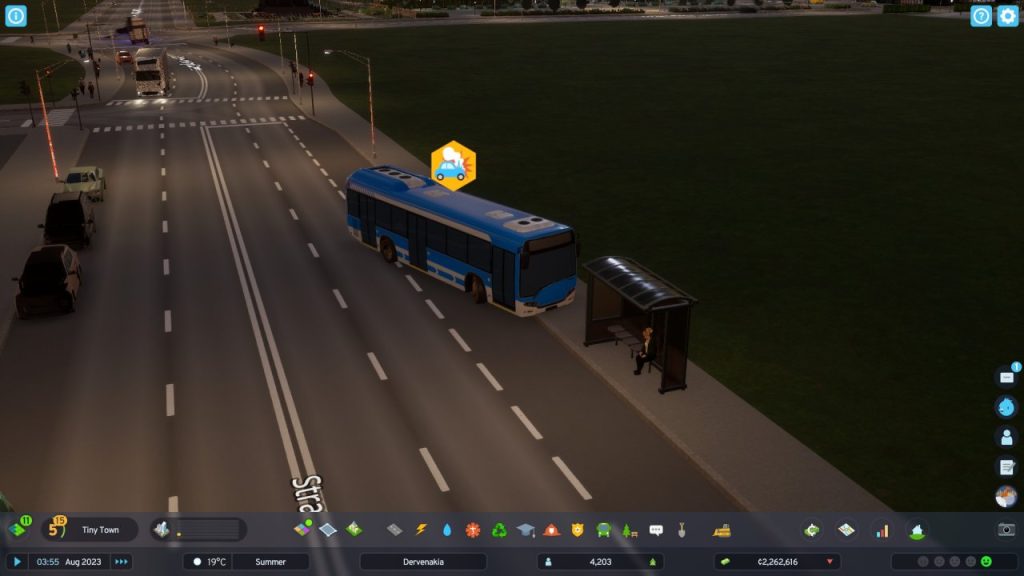
Of course, Cities: Skylines II doesn't stop at re-imaging the original game's innovations but introduces several new features, either in terms of content and its organization, or purely Quality of Life additions. I couldn't help but mention first the fact that all kinds of roads we build come by default bundled with underground power and water supply networks. It is therefore no longer necessary to draw new lines of pipes and above-ground cables every time we want to develop our city - as long as we build the roads, and make sure that these roads are connected to the existing network which is fed by the power plants.
There is also a diversification in the way many of the new buildings and services are unlocked. Instead of having to develop and "level" our city by reaching certain population milestones to make new construction available, we now literally collect XP every time we construct a new building, and when our city collects enough XP to "level up" we earn some points, with which we can directly unlock the buildings we want from a series of "building trees" corresponding to the energy, water, roads, transportation, etc. sectors. While this offers the bonus of more targeted development (for example, I may want to unlock Highways, Intersections and Gas Power Plants early on, so I spend targeted points towards those build nodes), it also puts the player in the mindset of having to choose and prioritize certain development areas at the expense of others, which may not appeal to those who preferred the ease of "horizontal development" offered by the old model.
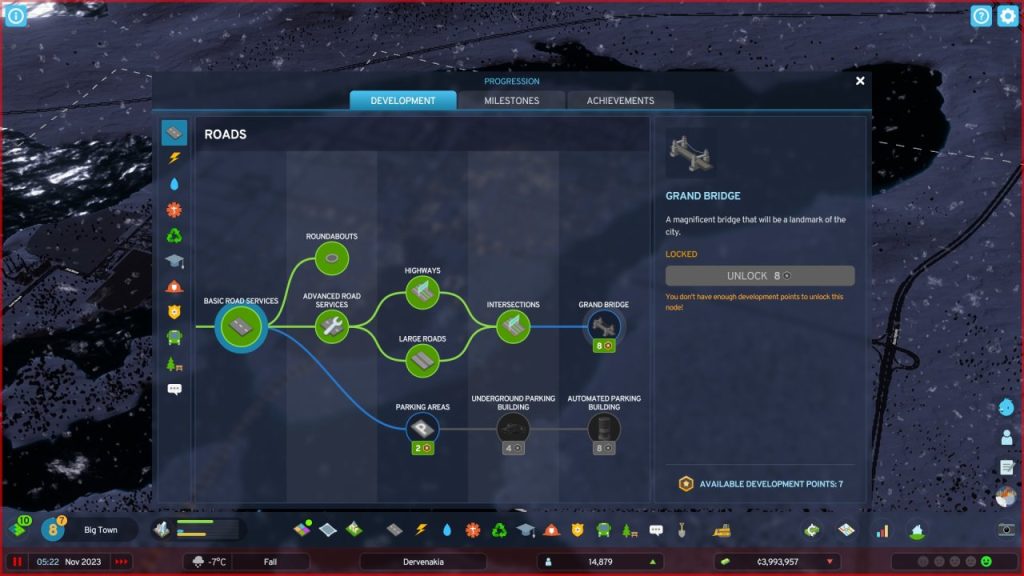
Another useful feature that should be pointed out (and which I think was taken straight from a fan mod) is the ability for modular expansion of most service buildings. For example, hospital buildings offer the possibility to build 2-3 extra extensions (for a corresponding cost, obviously), either on the same plot or on adjacent ones, in order to increase their capacity, the number of ambulances or how many patients they can serve, allowing to expand the health system without having to build a whole new hospital. Similarly, educational institutions can build libraries and stadiums that increase the quality of studies and offer bonuses to the surrounding area, water and sewage buildings can acquire filters and reservoirs that increase water production and reduce sewage, and much more.
The whole package also introduces a lot of new buildings like dedicated industrial units, including farms of various kinds, ore, oil and forestry industries (unlike the first CS where we had to design new districts, define them as farmland or timber zones etc, and zone industrial areas on them to get the building we want), which have to be built on areas rich in certain resources in order to work. Finally, I should also point out the introduction of a burning desire of mine: the possibility of Mixed Residential/Commercial zones, which have shops on the ground floor and a Medium Density Residential building above. At last we can finally live the Greek dream of having supermarkets on the ground floor of 10-story apartment buildings!
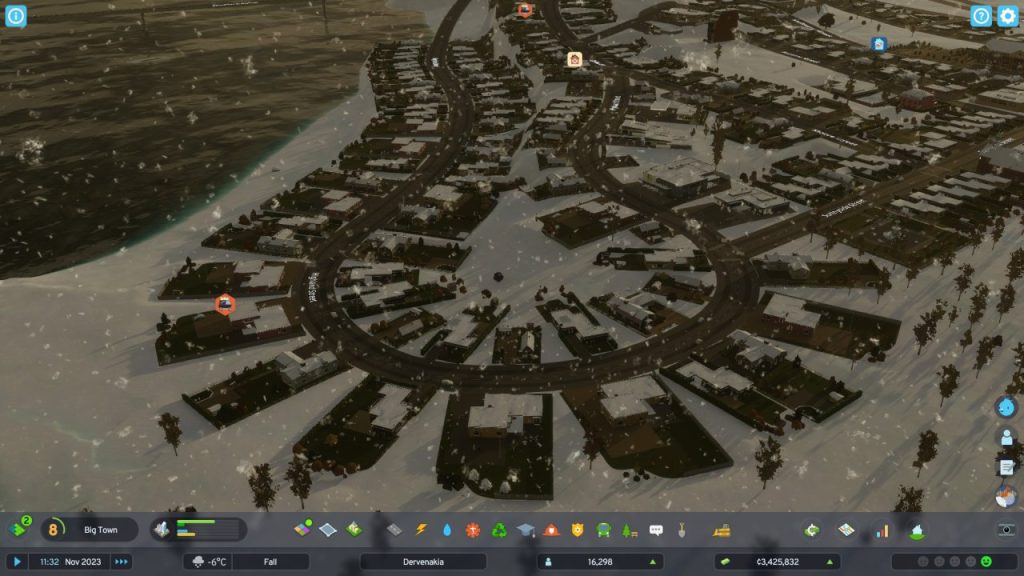
Indicative of the detail offered by the whole simulation is the interesting feature of... the separation between the voltages of electricity. The current leaving our power plants (or that which we import into our city via external connections) is at a high voltage, and requires the construction of a substation that converts it to a lower voltage so that it can be used by the homes and businesses in our city. In this respect, Cities: Skylines II is literally the joy of the obsessive city planner - if you dream it, you can build it.
It becomes clear that, despite the sheer volume of material that CS offers, CS2 nevertheless manages to be more or less an improvement in almost all gameplay areas of the city building experience that is at the core of the series. Somewhere at this point though comes the big flaw that more or less spoils the party, and it's none other than the technical area. To call Cities Skylines II "unoptimized" at this stage would probably be the understatement of the century, as any graphics quality setting above Very Low results in massive framedrops that make the gameplay experience from irksome to almost unplayable, even on high-end systems. This has been pointed out by the game's developers themselves, and the "review guide" that accompanied the game's code explicitly states that for now, settings above Very Low will lead to performance issues. So I too played mostly on Very Low settings, and only brought the game up to High when I wanted to take a screenshot, then immediately lowered the settings back down to the lowest ones.
When we're literally a few hours before the game's release and this particular issue has been pointed out but not resolved, we might have a problem. It inevitably raises the question of whether or not would-be purchasers of the game are willing to come to terms with this, showing or not showing understanding of the state of the game in its release version, without anyone being able to say that either the side that shows understanding or the side that demands a commercial product they spent their hard-earned shekels on to be technically solid, is really in the wrong.
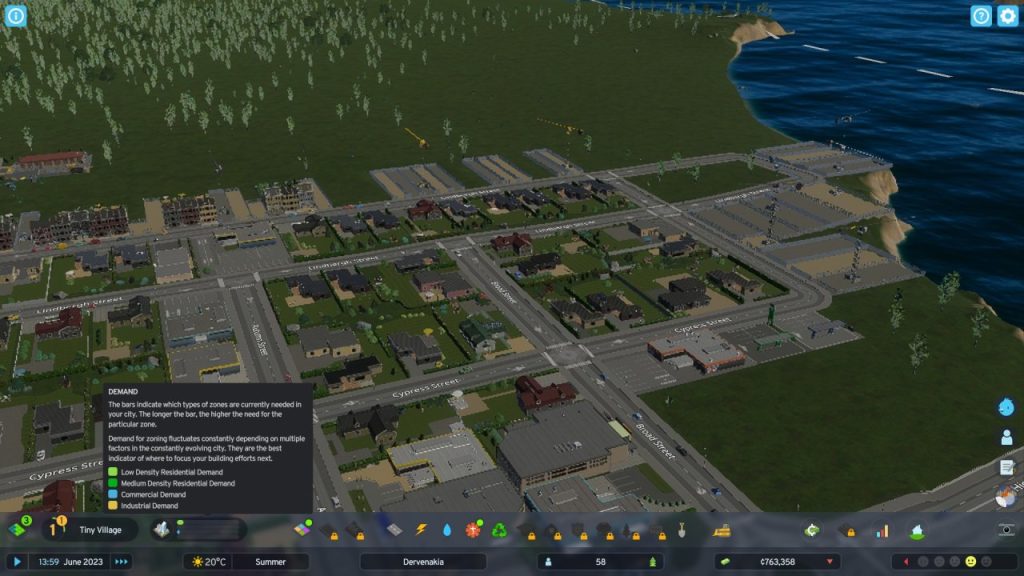
And it's a real shame, because if we focus solely on the gameplay, then Cities: Skylines II is probably the best and most realistic experience we've had so far in the City Building Sims genre since its inception. The first CS along with its Expansions may offer a more complete package overall in terms of sheer numbers (which obviously makes sense, since it's seen almost 10 years of development and extra content, both official and via fan mods), but the base that CS2 offers is obviously more complete than the equivalent base offered by the first CS back in 2015. And given that this base is sure to receive the expected "Paradox Treatment" and be further developed with DLC and Expansions, I'm really curious what heights the future enriched version of the game will end up reaching. As long as they fix the graphics first...
RATING - 80%
80%
Solid Foundation
Perhaps the most complete and realistic experience we've enjoyed in the City Building Sims genre so far, the prestige of which is sadly marred by poor optimization in the graphics department.






data-trpgettextoriginal=9 comments